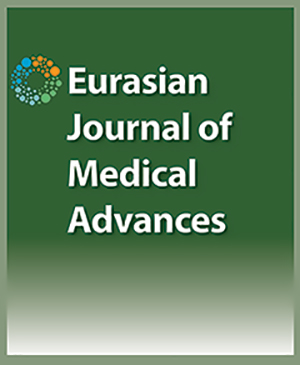

Why are Children Less Affected by COVID-19 ? Could there be an Overlooked Bacterial Co-Infection?
Ramazan Azim Okyay1, Ahmet Riza Sahin2, Rene A. Aguinada3, Muhittin Tasdogan41Department of Public Health, Kahramanmaras Sutcu Imam University Faculty of Medicine, Kahramanmaras, Turkey, 2Department of Infectious Diseases and Clinical Microbiology, Kahramanmaras Sutcu Imam University Faculty of Medicine, Kahramanmaras, Turkey, 3Heating and Air Design Corp. California, United States of America, 4Department of Anesthesiology and Reanimation, Hasan Kalyoncu University Health Sciences Faculty, Gaziantep, Turkey,
As it is known, there is a pandemic that is growing rapidly and affecting almost the entire world, including Turkey. Following the announcement of the isolation of a new type of Coronavirus (SARS CoV-2) by the Chinese government on January 7, 2020, as of March 15, 2020, 168 834 Verified cases and 6492 deaths were reported due to this pandemic (COVID-19 pandemic) (1,2). However, it is noteworthy that children are less affected by this viral pandemic in terms of both the number of cases and the incidence of serious illnesses. So far, it has been shown that children aged 0-9 years generally have a mild infection, but there are no reported fatalities (2,3). It is not new for children to experience some viral diseases mildly (4). However, given the seriousness of the current pandemic, clarifying the cause of this situation may reveal crucial information regarding the outbreak control. The fact that the clinical picture in children is seriously different from adults may be that their immune system responds more quickly than adults, or it may depend on the immunity they have gained through the extended immunization program. In other words, some antibodies that exist in children thanks to vaccination but disappear in adults over the years may protect children. In a study conducted in 2008, the measles vaccine has been shown to provide neutralizing antibodies against SARS CoV (5). In addition, studies revealed that whooping cough outbreaks have been observed in China in recent years (6,7). In one study, Bordetella spp. were isolated in 4.51% of pediatric patients followed for respiratory tract infection (8). There are similarities between SARS CoV-2 and transmission dynamics of Bordetella species. Both pathogens are transmitted at a high secondary attack rate via respiration and droplet. The incubation and clinical time of both pathogens are similar. Prior antibiotic use facilitates the placement of Bordetella species. Bordetella species actively interact with other pathogens or flora members (9,10). In the clinic of both pathogens, there are asymptomatic carrier cases, cough is dominant, as well as the complaint of dry cough. It is noteworthy that the number of CD4 T lymphocytes has decreased in the laboratory findings of whooping cough, and that some medicines used in treatment (Chloroquine, erythromycin) can also be used in Bordetella species. The absence of death in the 0-9 age group who with a strong titer of whooping cough antibodies also brought to mind the possibility of an overlooked co-infection in the pandemic (7). Pathogens that may co-infect with SARS CoV-2 such as whooping cough and different clinical manifestations seen among children and adults are considered to be examined in this respect. In this sense we developed two hypotheses: Hypothesis 1: Could childhood vaccines be the reason for a milder infection in children? Hypothesis 2: In cases of severe pneumonia and ARDS, can there be a bacterial co-infection, such as bordatella pertussis, that has been vaccinated in childhood but whose antibody titer has declined over the years?
Cite This Article
Okyay R, Sahin A, Aguinada R, Tasdogan M. Why are Children Less Affected by COVID-19 ? Could there be an Overlooked Bacterial Co-Infection?. EJMO. 2020; 4(1): 104-105
Corresponding Author: Ramazan Azim Okyay



